Glass Man talks to South Korean actor CHO BYEONG KYU about staying connected to himself and those around him amid a string of Netflix hits and an electrifying ride on the K-wave
From Autumn Issue 55
Cho Byeong Kyu follows the laws of nature. Just like archers draw the bow towards themselves before propelling it forward, Cho goes inward to go outward. It’s this natural tendency towards introspection that has helped him, not only stay afloat, but to rise to the top of the global pop-culture phenomenon that is the Korean wave.
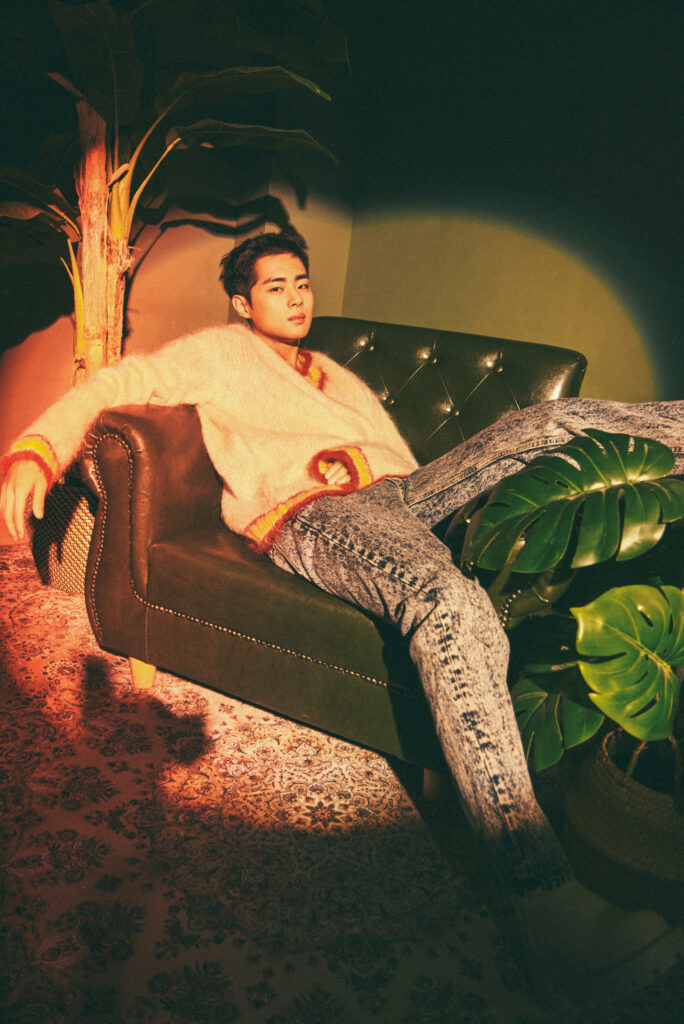
Photographer: Soyeon Kim
For Cho, acting is less about the visible and more about those secret, interior worlds that lie beneath the surface. Although his roots are in theatre, the actor’s first breakout role came in 2018 with Netflix’s Sky Castle, a satire on the ruthless family dynamics of Seoul high-society. Since then, the 27-year-old has continued his steady ascent into K-drama stardom.
You may know him from Hot Stove League or his debut lead role as the fiery So Mun in Netflix’s smash-hit, The Uncanny Counter.
Playing a high-school-student turned demon-hunter, his enthralling performance cemented his reputation as one of the most sought-after young talents in the industry. While the K-wave continues to swell, Cho is exactly where he needs to be – at the crest, salt-spray in his hair and feet firmly planted.
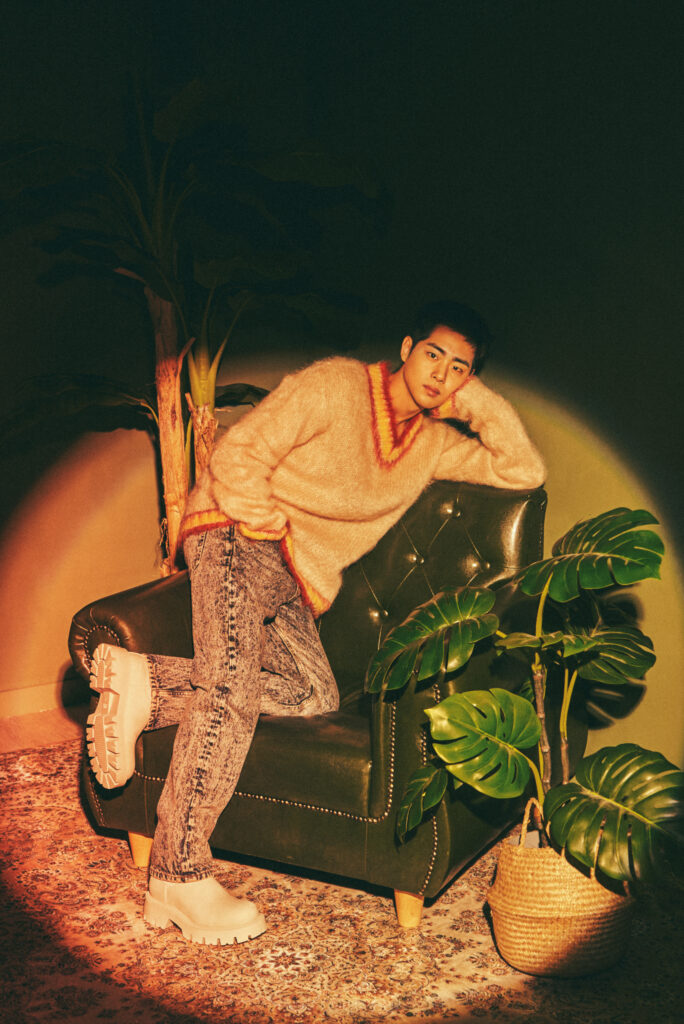
Photographer: Soyeon Kim
As a child, you went from aspiring football star to aspiring actor. Can you share more about that switch?
When I saw the 2002 World Cup in Korea, it totally blew my mind so I decided to become a soccer player. But as time went by, I found that I wasn’t cut out for it. I was struggling to find something I was interested in and then one day I took an acting class at school in New Zealand.
I thought “oh, this might be it”. It was impressive that each actor in the class had a completely different style, even though we were doing the same work with the same character. Everyone has their own personality, character and life … that part made me feel free on the stage. But my parents didn’t want me to be an actor so I asked them to just, please, let me do it if I passed art high school in Korea [laughs]. That’s how I began.
Was there a specific moment when you fell in love with acting?
There wasn’t a specific moment but when I started out I thought that good acting meant just focusing on my acting and feelings. As I gained more experience, I realised communication with other people, relationships with the entire team and keeping the tone and manner of the film cohesive [are] the kinds of things that make my acting better. So basically, there is nothing I can do just by myself. Creating connections and synergies, and cooperating with other people … that’s what makes me fall in love with this job.
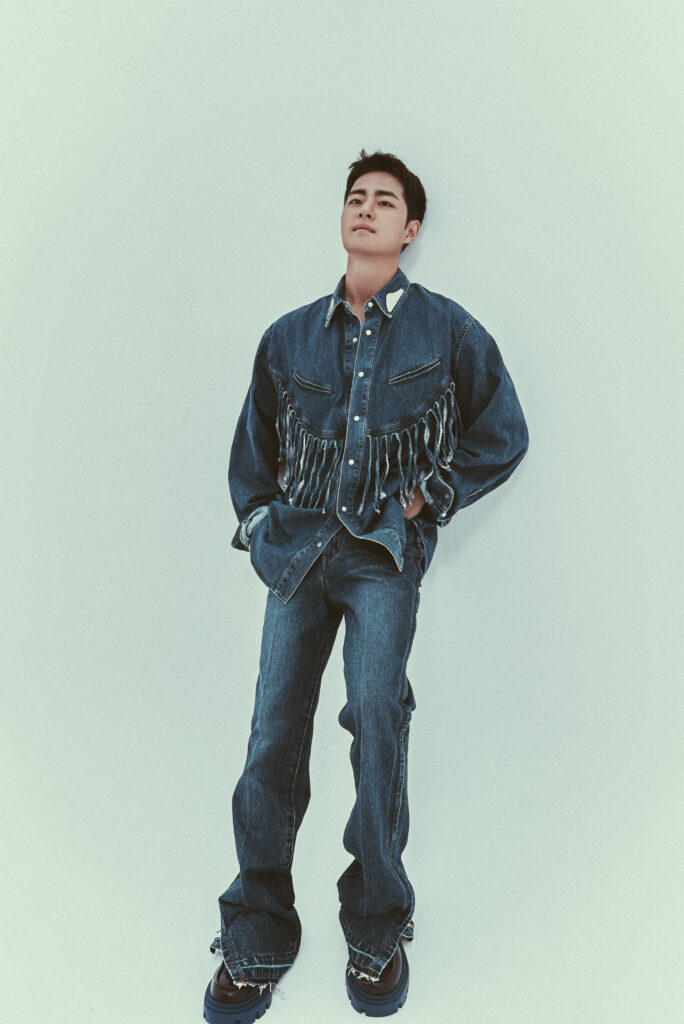
Photographer: Soyeon Kim
You’ve played a wide range of characters, from demon hunters to rich kids – where do you draw inspiration from?
I don’t usually get inspiration from outside. I think the most important part of acting is the emotion of the situation at hand. I mean, I can change my outfit or make-up or whatever to express the character, but mainly it’s all about the inside. I truly believe in thinking deeply about [the character’s] life, their thoughts and how they would feel at that moment.
K-drama is taking the world by storm. Can you share what it’s like to be part of an industry that is enjoying so much recognition at the moment?
First of all, as a person in this industry, I’m so proud that so much K-content has attracted global attention. It’s great that there are more opportunities to participate in more diverse content as an actor. I think we should value all the diversified opportunities and contribute to the production of high-quality content with a sense of responsibility.
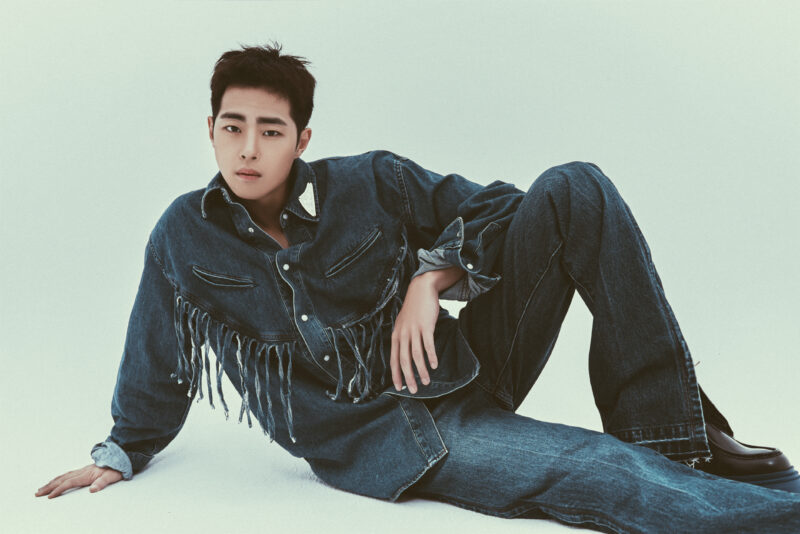
Photographer: Soyeon Kim
What’s the most challenging role you’ve played so far?
I’d say So Mun in the Netflix series, The Uncanny Counter 2. I had to do the stunt acting myself and it’s a fantasy so I had to make people believe it too. There [were] so many different elements going on at the same time. But it was also the most interesting work I’ve done. I loved working with the crew. We’ve been together for a long time and have been through so many ups and downs. We really learnt how to turn hard times into fun experiences as a team, so I’m hoping there will be a third season.
I read that you started in plays like Hamlet and Othello. Would you ever go back to the theatre?
Yeah, I started acting in plays. It is an unwavering fact that my roots are in theatre. I want to go on stage someday if I have a chance… I hope that’s not too far away.
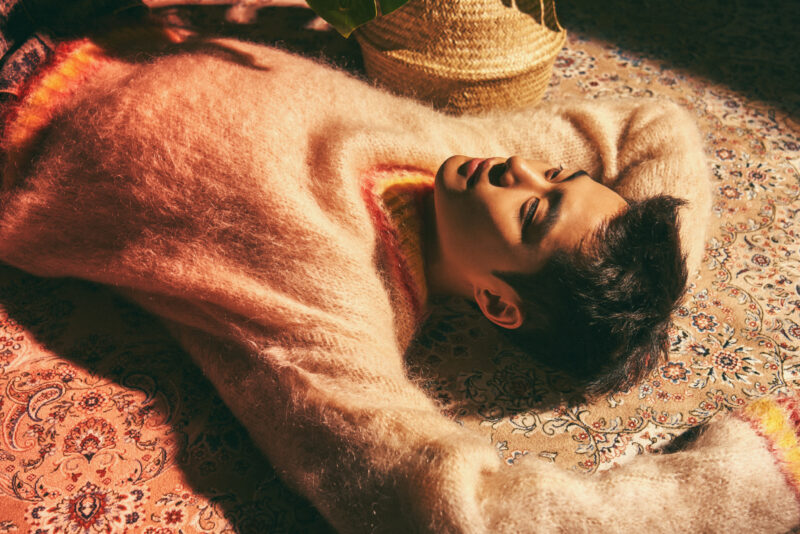
Photographer: Soyeon Kim
What have you been watching at the moment?
Recently, I was fascinated by Babylon. It’s a film about Hollywood actors, producers and industry players during the transition from silent to sound films. The lives of those people in transition were not much different from those of us in our industry now. Despite the difference in time, there are so many things that I can relate to, so it came very close to my heart.
Is there a genre you haven’t worked in that you’d love to in the future?
Nowadays, I think there’s a trend to try and include high-brow genre in your work. But I don’t prefer any particular type of genre or character. For me, it’s more important that I resonate with the people I work with and that I feel a strong attraction to the work itself.
What’s the most important lesson you’ve learned?
I realised when I was young that I couldn’t have everything I wanted [laughs]. It made me feel lonely at times, but it taught me how to live my life without being swayed. And I think that is a very important skill for an actor to have.
by Christiana Alexakis
This interview and editorial was realised outside of the SAG-AFTRA strike
Photographer: Soyeon Kim
Stylists: Park Jin A and Jung Won Young
Creative director: Ray Yeom
Make up: Jung So Hee
Hair: Kim Hye Mi
Production: Hazel Park and Khloe Kim
Photography assistant: Kim Haewon
Talent: Cho Byeong Kyu
Look 1, 2 and 5: All clothing and accessories MARNI
Look 3 and 4: All clothing and accessories TOGA ARCHIVES
